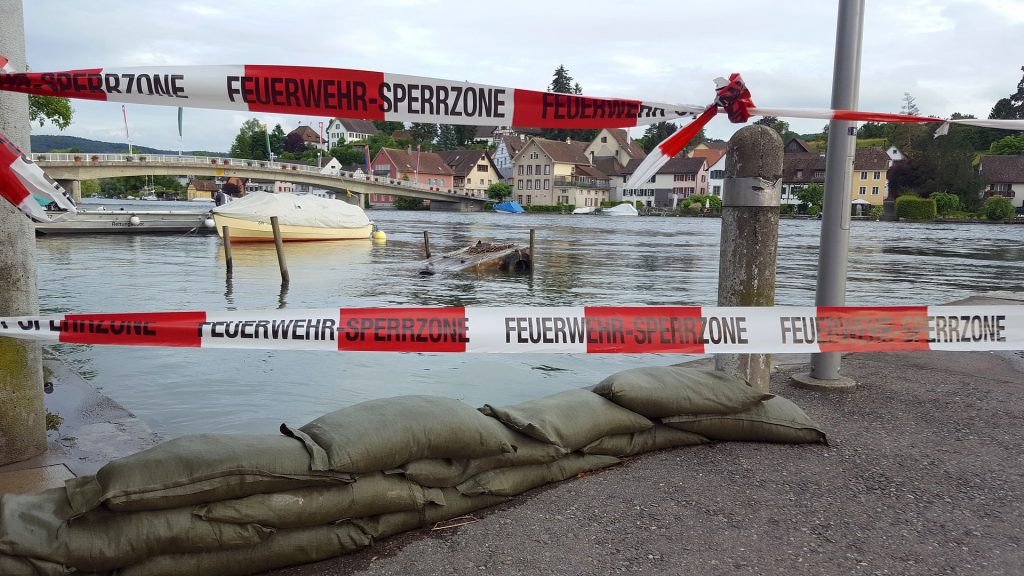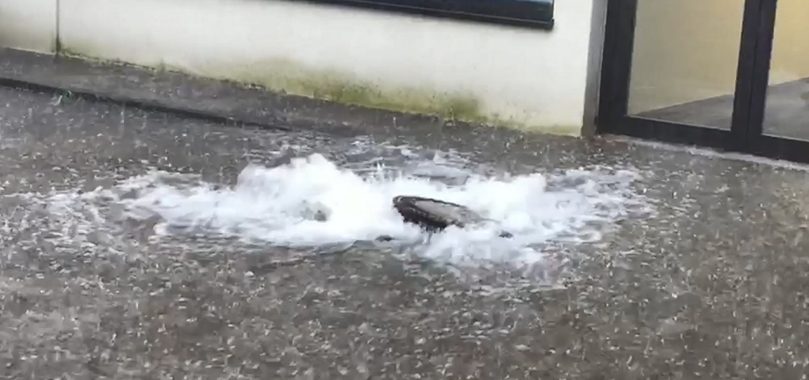Particularly in the summer months, after long periods of heat, heavy rainfall events repeatedly occur, often with devastating damage in the affected areas. Heavy thunderstorms cause immense amounts of rain, coupled with storms and, in some cases, heavy hailstorms. The media then often speak of a torrential rain.
Definition torrential rain of the century versus heavy rainfall
By definition, a torrential rain of the century is a rain event that produces such amounts of rainfall as occur statistically only every 100 years. The fact that such a torrential rain event occurs much more frequently, however, shows us the recent past, so that one cannot and should no longer rely on such statistical values today.
On the other hand, we speak of heavy rainfall when very high amounts of precipitation fall within a limited area within a very short time. The German Meteorological Service (DWD) indicates a threshold value for heavy rainfall of at least 15 litres per square metre, which falls within one hour. The National Weather Service of the United States of America does define heavy rainfall as rain that accumulates at a rate of at least 0.3 inches per hour.
A heavy rainfall event in itself is often not the problem, but rather the fact when and where it occurs. Heavy rainfall falling on forested and uninhabited areas does not cause major damage in most cases. However, if these heavy rain events occur in populated areas and thus on areas that are often heavily sealed by buildings and road construction, the conventional sewers installed in the roads often cannot hold the water masses.

Extreme weather events, for example in July 2014 in Münster, where up to 292 litres of precipitation fell locally in a few hours over the city, or more recently in Olpe in the Sauerland region, show that it can affect anyone. These are all places that otherwise knew no flash floods and also have no direct location to a large body of water. Heavy rain can hit anyone hard, so climate experts all over the world warn.
And who’s to blame? Climate change, of course.
Climate change is unstoppable even if there are still some heads of governments who deny it. Due to climate change, the risk of extreme weather events such as heat and storms is steadily increasing. This is due to the warming atmosphere, melting poles, changing air currents and much more. This is why such weather phenomena will probably occur much more frequently in the future and in regions that have not yet been affected by them.
All this is not only a burden for mankind and nature from rivers and streams passing over, but also for the sewage systems installed in communities and cities, which are often overburdened by the water masses produced.
It is therefore important for both local authorities and homeowners to take appropriate precautionary measures to be well prepared in the event of an emergency and to avoid or at least minimise major damage.
Where can citizens find out about possible dangers?
For example, online portals like weather.gov offers fast and early information. Around the clock, meteorologists and storm experts provide authorities, companies and all citizens with precise warnings free of charge. And it is even so site-specific that you can search for specific cities or ZIP code areas. Marked in colour, the type and severity of the expected storms are highlighted.
Citizens can also find out, free of charge, where specific flood hazards and risks exist in their region or city using the flood hazard maps, which can be viewed publicly and accessed online. Particularly around rivers, it is shown what effects an increase in the water level has on adjacent built-up and undeveloped areas. Certainly interesting for anyone or anyone else who would like to build their own home in a new development area.
Further information on flood risk management can also be found at the National Weather Service (US) and in the EU Flood Risk Management Directive.

